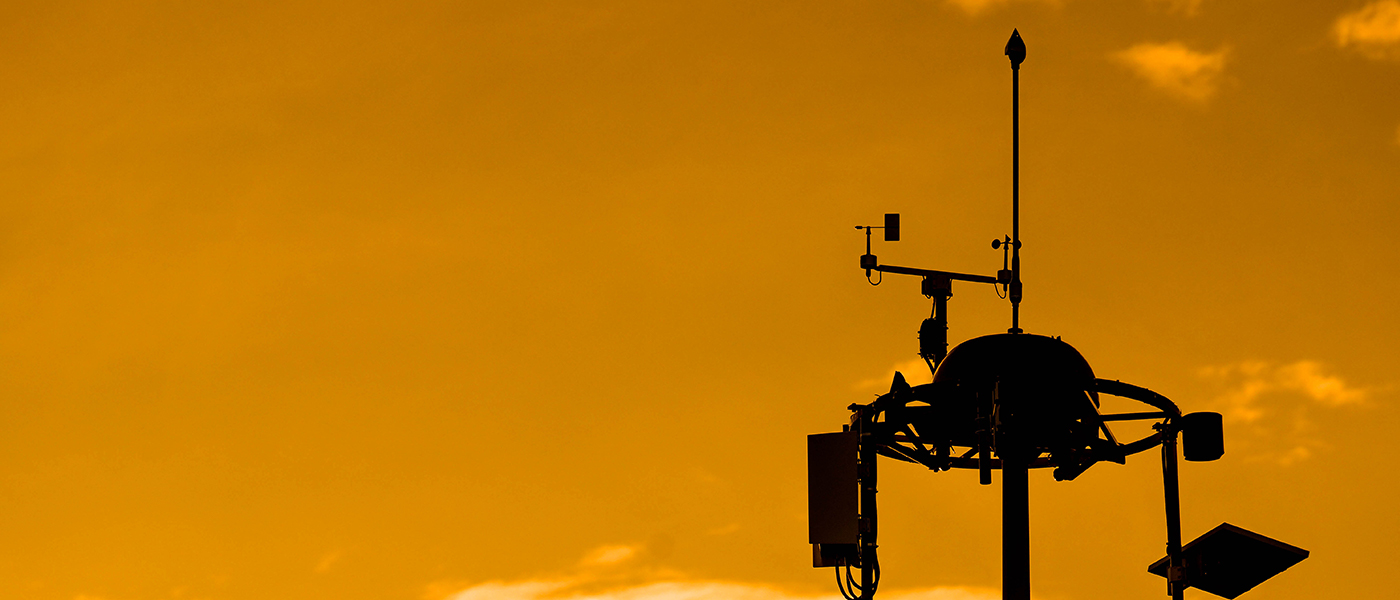
Smarter, reliable sensor systems
Science of Sensor Systems Software
Glasgow is leading a research programme that aims to deliver smarter, more reliable sensor-based systems. These are the systems that will determine the future success of smart cities, the internet of things, big data and self-driving vehicles.
The Science of Sensor Systems Software (S4) project aims to develop new principles and techniques for sensor system software. These will allow scientists and policymakers to ask deeper questions and be confident in obtaining reliable answers from the ever-expanding networks of sensors. The project’s outcomes could lead to more robust water networks, more responsive air quality monitoring, reliable autonomous driving and precision manufacturing and more.
Sensors are devices that detect and measure change. Sensor-based systems collect, manage and process the data that are gathered by these sensors. These systems also analyse, contextualise and present this data as information that can be understood and acted upon. Getting the most value from the installed sensor infrastructure needs smart and reliable sensor-based systems.
The project, supported by a grant of nearly £4.2m from the Engineering and Physical Sciences Research Council (EPSRC), will run until 2021.
S4 brings together researchers across computing, engineering, and mathematics from the Universities of Glasgow, Liverpool and St Andrews, and Imperial College London. This grouping combines world-leading research expertise in sensor software, formal modelling and verification, network deployment, autonomy, uncertainty and programming.
A number of companies and scientific organisations are also involved, including ABB, British Geological Survey, CENSIS, Rolls-Royce, Thales and Transport Scotland.
Professor Muffy Calder, Professor of Formal Methods in Computing Science, is the project leader.
“Although sensors are becoming ever more commonplace in all kinds of devices around us and in our everyday lives, sensors themselves and the environments in which they operate are very uncertain: we don’t have a unifying science to ensure that the systems and the information they provide is resilient, responsive, reliable and robust.
By the end of the project the team will have answered a number of fundamental questions about how to design, deploy and reason about sensor-based systems, developing new principles, techniques and tools, alongside simulations and physical sensor testbeds for experimentation. We will also demonstrate the applicability and effectiveness of the new techniques across a range of applications”.
Professor Muffy Calder
Dealing with uncertainty
Glasgow’s key role in this project comes from the capabilities of its Formal Analysis, Theory and Algorithms group. The collaborative nature of the S4 project aligns with the group’s desire to apply the clarity and logic of formal theories to problems of real practical significance.
Dr Michele Sevegnani is a Research Fellow at Glasgow on the project. His expertise is in Formal Methods, which involves using mathematics and logics to reason about the properties of computing systems. One challenge for sensor systems is how to reason about the continuous nature of the physical environment, the discrete nature of software, and the stochastic behaviours of sensors and human agents.
Formal methods are used to express properties relating to the relationship between these elements, from which a guarantee of future behaviour can be established. This is important because if you can’t understand how a sensor system will respond to all the possible interactions and events, then you may not be able to trust the data it produces.
“We are starting a collaboration with the University of Liverpool on a problem called target counting. We would like to detect how many targets there are in a particular (sensed) space, but the range of one sensor may overlap with another sensor and that can lead to double counting. While this may sounds like an idealised problem, it shows up every time you consider everyday problems like crowd control or traffic monitoring. Good solutions require a lot of deep mathematics and novel ways to deal with the stochastic nature of target movements, Glasgow has strengths in this kind of analysis.”
Dr Michele Sevegnani
Open sensor systems
Establishing clear parameters and standards for the way software drives sensor systems opens up exciting possibilities. For example, sensor infrastructure can be opened up for use like a public resource. Instead of hardwired and static single purpose systems, the aim is to develop a simple programming paradigm for an open sensor infrastructure. This is similar to the way that a developer can combine telecommunications infrastructure and GPS to create an app for a smartphone like Uber.
Dr Sevegnani is working on this with partners at Imperial College.
“We have started with a small deployment of 20 sensors in a park, gathering different types of data such as air quality, vibrations and other environmental aspects. We are developing a platform that allows programmers to develop and deploy their own app, utilising the sensor infrastructure. Key to this is defining a programming language that is simple enough to write powerful apps but with the guarantee that programmers can never compromise the sensor infrastructure.”
Dr Michele Sevegnani
Image: Bigraphical model showing interactions within a sensor network (Dr Sevegnani)

Traffic surveillance (CCTV)


